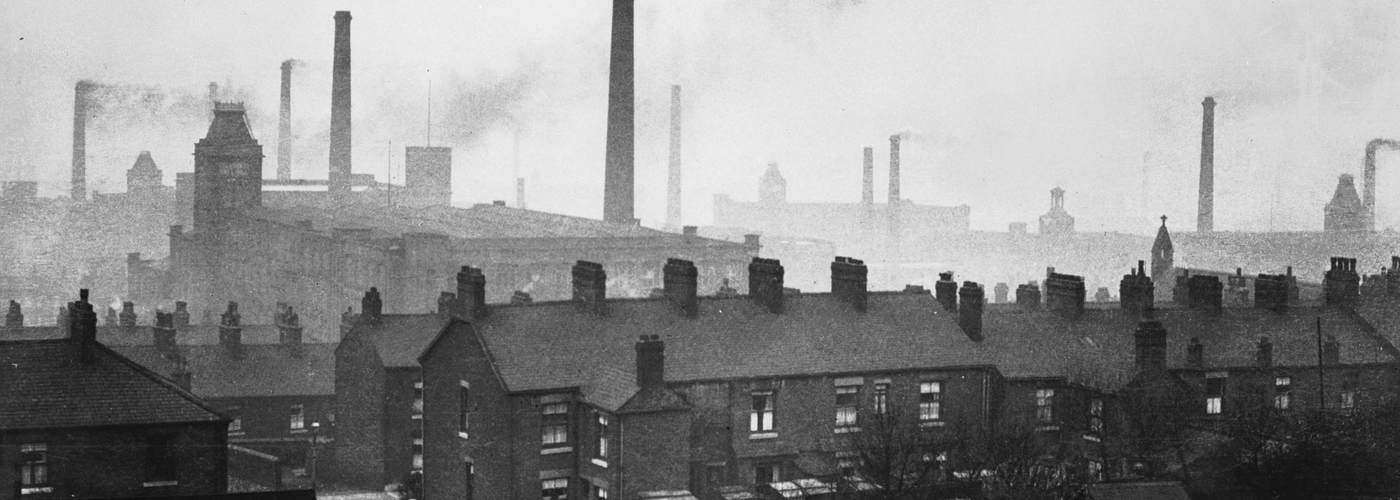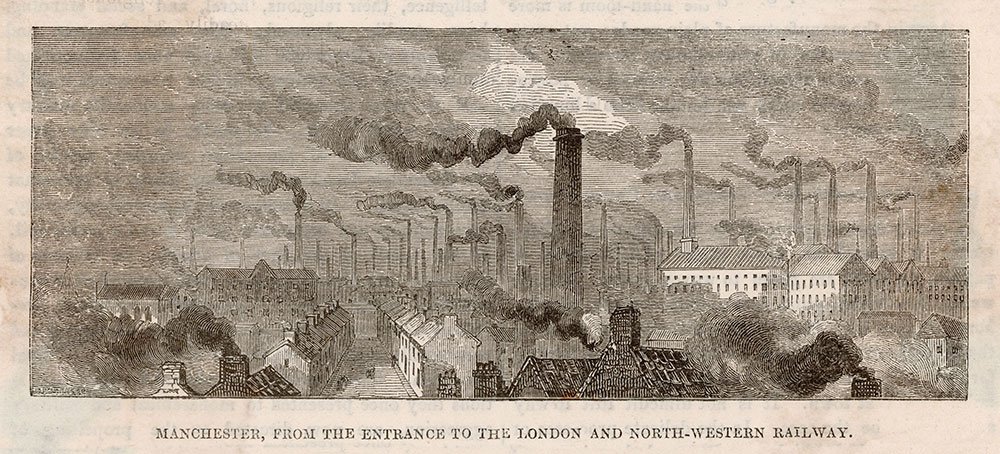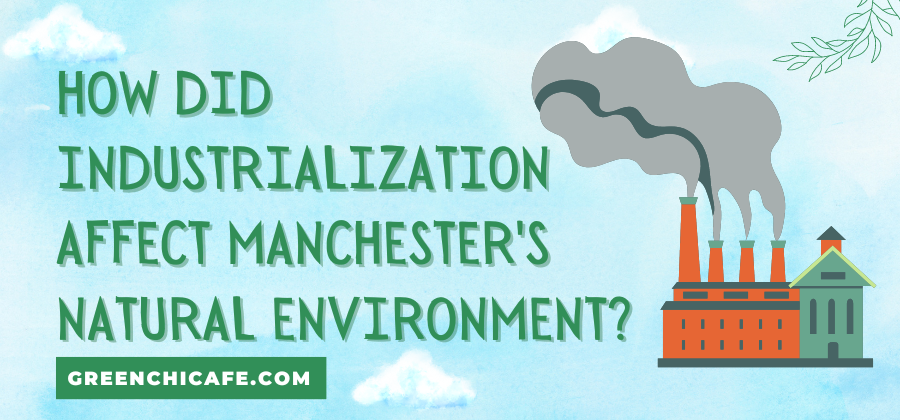Industrialization radically transformed Manchester’s natural landscape and ecosystems.
This article explores the environmental impacts of Manchester’s rapid industrial growth and explains why protecting nature matters.
Understanding this history provides lessons for sustainable development today.
How Did Industrialization Affect Manchester’s Natural Environment?

Industrialization severely damaged Manchester’s natural environment through uncontrolled pollution, resource extraction, and development that disrupted ecosystems and harmed public health.
Key Points
- Manchester experienced massive industrial expansion in the 18th and 19th centuries.
- This led to extensive pollution of air, land, and waterways in the region.
- Citizens ultimately organized to demand environmental reforms to address the degradation.
Why Did Manchester Become So Industrialized?
Manchester had certain advantages that enabled it to become one of the first industrial cities.
Its location gave it access to labor, resources, and transportation that fueled industrialization.
The nearby Pennine Hills and Peak District provided a steady stream of workers who migrated to Manchester for factory jobs.
Canals and railroads connected Manchester to coal fields and ports.
The city also had ready access to water power from rivers and streams.
These factors allowed Manchester to rapidly scale up industrial production.
Cotton was the initial engine of growth, but Manchester soon became a hub for diverse industries including engineering, chemical works, and consumer goods production.
Lax regulations accelerated uncontrolled development.
How Did Industrial Growth Impact Manchester’s Environment?
Manchester’s industrial rise profoundly damaged the local environment.
Air and water pollution soared as factories, homes, and coal-fired power spewed contaminants.
Smokestacks from steam engines constantly belched soot and ash that coated the city.
Nearby waterways became fouled with industrial and human waste.
Living conditions deteriorated markedly even as the local economy boomed.
Additionally, industrial needs led to the over-extraction of natural resources like timber, minerals, and stone.
Canals and reservoirs disrupted natural hydrology.
Green spaces vanished as factories spread.
This environmental degradation took a major toll on public health and quality of life.
Manchester came to be known as “Cottonopolis” – evoking not only its status as a textile powerhouse but also its smoke-filled skies.
What Specific Pollutants Did the Industry Release?

Manchester’s factories, homes, and coal-fired facilities released a toxic mixture of contaminants into the air, land, and water.
Key air pollutants included particulate matter like soot along with sulfur and nitrogen oxides that contribute to smog.
Waterways were contaminated with dyes, bleaches, heavy metals, and other hazardous substances.
Soot blanketed buildings and streets.
Sewage, animal waste, and industrial runoff fouled the Irwell and Mersey Rivers.
Unregulated development filled canals and marshes.
This severe pollution degraded ecosystems and harmed public health.
But it was seen as an acceptable price of progress at a time before environmental regulation.
How Did Citizens Respond to the Environmental Degradation?
Many citizens initially tolerated the environmental impacts of industrialization as necessary for economic growth and prosperity.
But public outcry eventually grew as pollution proliferated.
Reformers like Edwin Chadwick worked to improve sanitary conditions and public health.
Journalists reported on the extent of environmental damage.
Grassroots citizen groups are organized to demand change.
Public anger swelled over especially severe pollution events like the stench from the Irwell in the hot summer of 1858, dubbed the “Great Stink.”
Such incidents gradually strengthened the momentum for environmental improvement.
What Lessons Can Manchester’s History Provide Today?
Manchester’s unchecked industrialization provides important lessons for balancing economic development and environmental sustainability today.
It shows the extensive damage that industrial pollution can inflict on nature and public health when left uncontrolled.
But it also demonstrates how an active civil society can ultimately pressure industry and government to adopt reforms.
As we confront climate change and other environmental crises globally, remembering Manchester’s past can help motivate action to create a cleaner and more sustainable future.
Why Is Protecting Nature So Important For Our Future?
Preserving a healthy environment is crucial for human well-being and prosperity.
Nature provides critical “services” that sustain our economies.
Healthy ecosystems supply fresh water, pollinate crops, generate oxygen, sequester carbon, and regulate climate.
Damage to nature can rebound in harmful ways across society.
Reckless resource extraction and pollution disrupt ecological balance.
But sustainable development allows continued progress while safeguarding nature for future generations.
As Manchester’s history shows, health and economics suffer when the industry grows unchecked.
But balanced policies that conserve nature can support lasting social welfare and prosperity.
Our future depends on living sustainably within our environmental means.
How did having so many industrial sites affect the environment in Manchester?
The concentration of factories and industrial sites within Manchester led to severe environmental degradation.
The high density of coal-burning facilities, including homes, factories, and power plants, generated immense amounts of air pollution.
Soot and ash constantly spewed from smokestacks and coated the city.
The proliferation of industrial sites also resulted in large volumes of hazardous wastes contaminating land and waterways in Manchester.
Chemicals, heavy metals, and untreated human sewage spilled from factories into rivers and canals.
Unchecked development filled in canals, wetlands, and open spaces that had naturally drained and filtered water.
The massive scale and concentration of industry overwhelmed Manchester’s ability to assimilate the pollution, resulting in contaminated air, land, and water that compromised ecosystems and public health.
What were conditions like for industrial workers living in Manchester?
Living conditions for industrial workers were dismal in 19th-century Manchester.
Many lived in cramped, unsanitary housing bordering factories.
These dwellings often lacked adequate ventilation, sanitation, or drainage.
Workspaces were likewise crowded and filled with polluted air.
Workers labored long hours in dangerous conditions.
Accident and mortality rates were high. Cholera, typhoid, and other diseases regularly swept through Manchester’s slums and tenements.
Life expectancy was far below national averages.
But opportunities for better wages led many laborers to endure the misery and filth of industrial Manchester.
Lax labor laws and an oversupply of workers enabled factory owners to impose awful working conditions that prioritized profit over safety and basic dignity.
Manchester came to symbolize the environmental and humanitarian nightmares of untrammeled industrial capitalism in 19th-century Britain.
What role did Manchester play in the Industrial Revolution?
As one of the first cities to industrialize, Manchester emerged as a leading hub of the global Industrial Revolution in the late 18th and early 19th centuries.
Its exponential growth as “Cottonopolis” powered the rapid industrialization of Northern England.
Manchester became synonymous with the factory system and mechanized production.
Its textile mills were models replicated across Britain and beyond.
A huge industrial workforce provided labor.
Coal, iron, and imperial trade supplied key inputs.
Canals and railroads enabled distribution.
Manchester’s dramatic rise showed the transformative economic potential of industrialization.
But it also revealed the immense environmental and social costs of unfettered industrial capitalism.
Manchester illustrated both the profits and perils of the Industrial Revolution.
Its legacy inspired later reform efforts to improve industrial conditions and protect nature from uncontrolled pollution.
Key Takeaways:
- Manchester’s rapid industrialization profoundly damaged the local environment through uncontrolled pollution, resource extraction, and development.
- This degraded ecosystems and public health.
- Manchester’s experience provides an important historical warning while also demonstrating how citizens can unite to drive environmental reforms.
- As we confront today’s sustainability challenges, we must act to harmonize economic progress with the preservation of nature that sustains us all.
- Balanced policies that restrain excess and conserve natural capital are key to an equitable and prosperous future.
FAQ
What Was The Great Stink in Manchester?
The Great Stink referred to an especially severe stench coming from the heavily polluted Irwell River in Manchester during the hot summer of 1858. It catalyzed public outcry over the extreme environmental degradation.
How Did Textile Mills Impact Manchester’s Environment?
The massive textile mills of Manchester generated huge amounts of pollution. They released coal smoke and chemical contaminants into the air and water. Dyes, bleaches, and heavy metals from textile production fouled local rivers.
What Public Health Issues Emerged In Industrial Manchester?
Rampant pollution contributed to outbreaks of cholera and other diseases in Manchester. High infant mortality rates were also attributed to the city’s heavily contaminated environment. Public health deteriorated markedly even as the economy industrialized.
GreenChiCafe is passionate about the environment and our natural world.
Check out our website for more great content on sustainability and green living!
